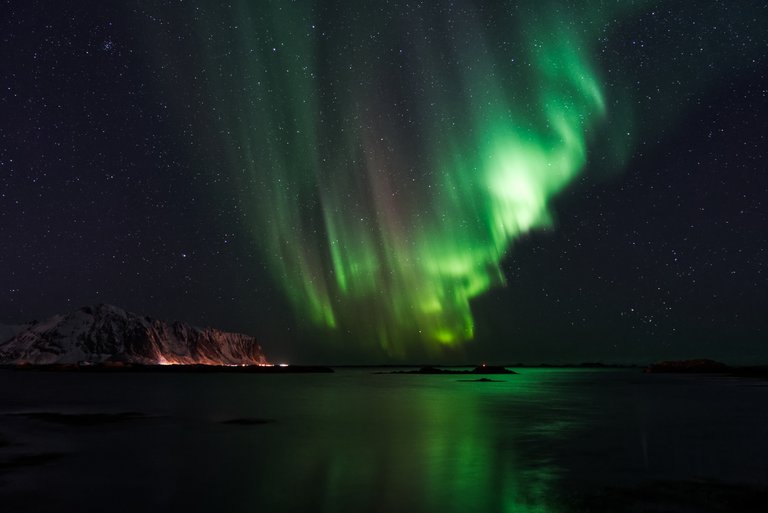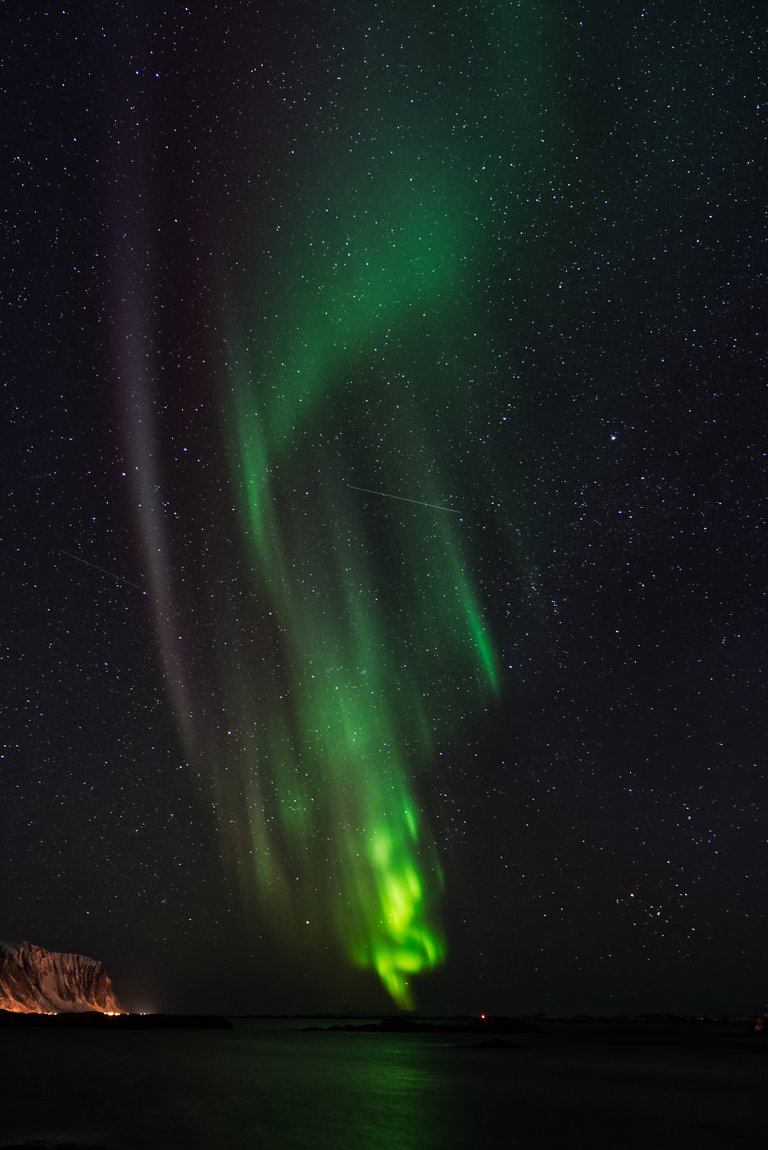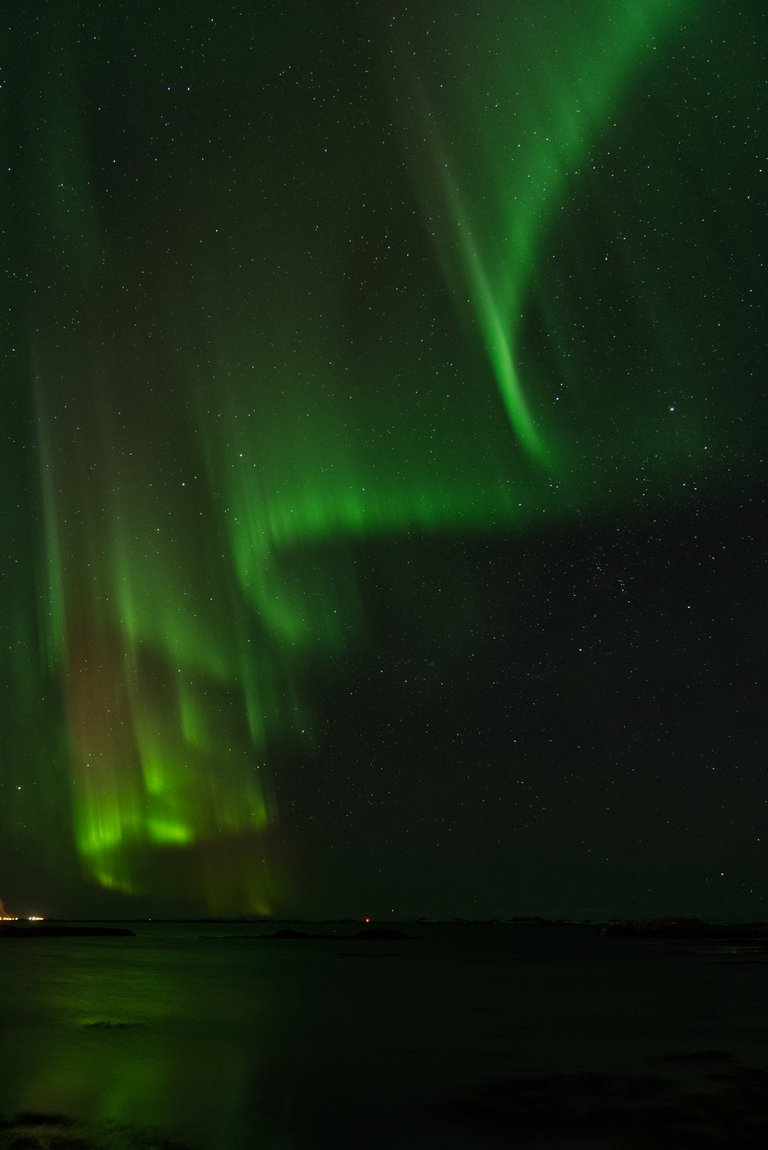Molecular oxygen (O2) gives typical green colors of aurora borealis.
In low atmosphere oxygen is only molecular.
We breathe only molecular oxygen.
Over 100 km of altitude (heterosphere) you can find also atomic oxygen (O2) created by photolysis effect (O2 molecule is divided in two oxygen atoms due to ultraviolet solar radiation).
Atomic oxygen, hitting by solar wind radiation (electrons and protons at a speed between 200 and 900 Km/s), creates the rare red colors of aurora (it is why you see sometimes red colors above the green colors).

There are also nitrogen (highest percentage) and nitric oxide in atmosphere, and they give respectively blues color and magenta/pink color. Magenta/pink auroras is extremely rare and it happens when solar wind has a highest energy and it reaches the low zone of atmosphere, where the percentage of nitric oxide is higher.

I think to be under an aurora is the most beautiful and amazing show nature can offer. I felt a sort of spiritual presence, the feeling that all this beauty can't be originated by a random interaction between radiation and matter, but there was a sort of intelligence behind this dance, a superior harmony, and my rule was to be the eyes and the conscience able to appreciate all these. I was the eye of an invisible creator, and I forgot cold temperature, anxiety and worries of our daily life.
Here auroras dancing, like a long sheet moved by the breeze:


Some technical notes: I used a Sony tele 24-70 F2.8 on a tripod (always F2,8, sometimes F3.2), iso between 640 and 3200 (usually 1600-2000), where lights was stronger, I set 2 or 3 seconds, when light was weaker, time between 20 and 30 seconds (over 20 seconds you can have a bit of stars trail, but not a problem). About focus I set it to 15 meters (only 24mm, not with higher focals), and I all things had the right focus between 15 meters and infinite (thanks to hyperfocal). Stabilization off, and a two seconds delay to avoid vibrations resulting from the finger pressing the shutter button.
Just a curiosity: I have used white balance in post production, but the green didn't change, because the green of aurora has specific frequency (557,7 nm) that is the frequency of photons emitted by molecular oxygen transition from excited electronic orbital and low regular electronic orbital. It is a pure color, so it can't be changed by white balance change.
Pictures taken with a Sony Alpha 7iii camera.
Vestersand, Vestvågøy island, Lofoten, Norway. On background Eggum cape.
Night between 28 and 29 march 2024.

